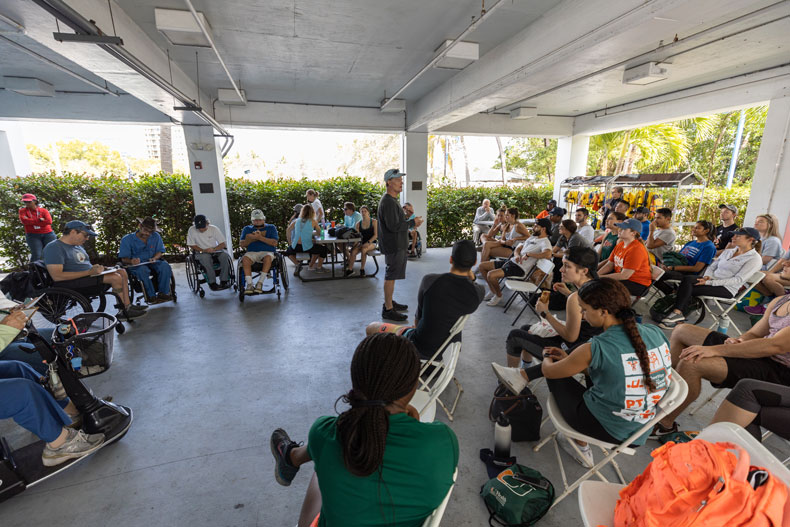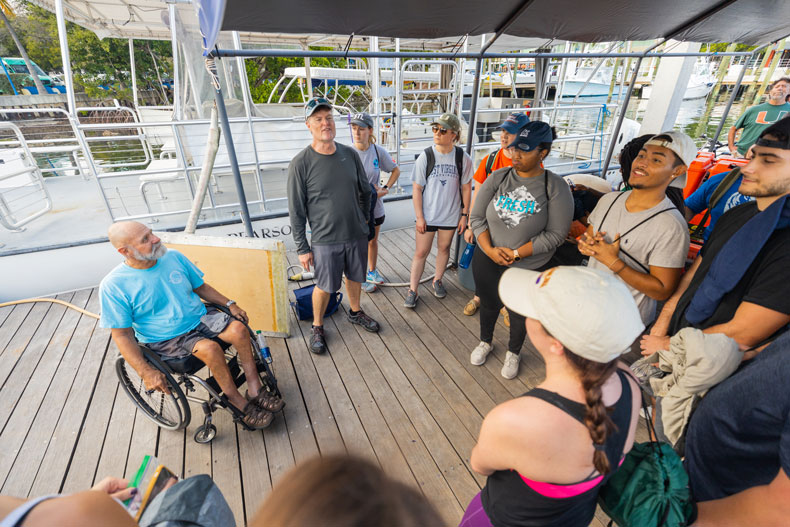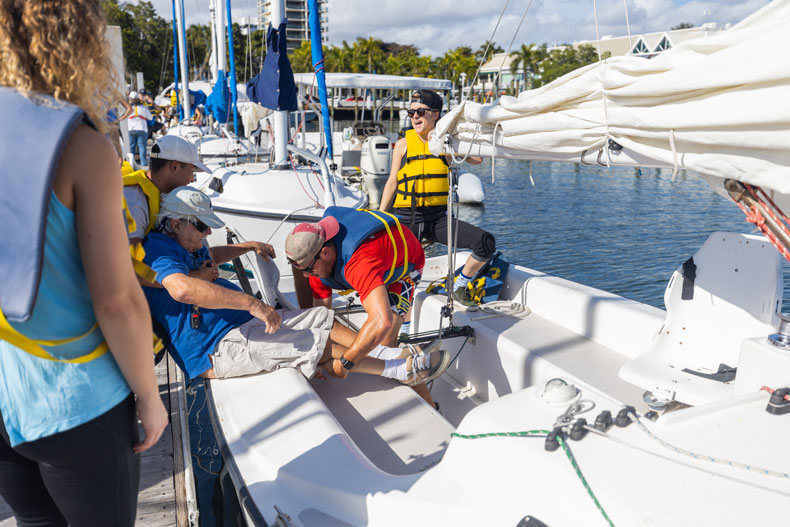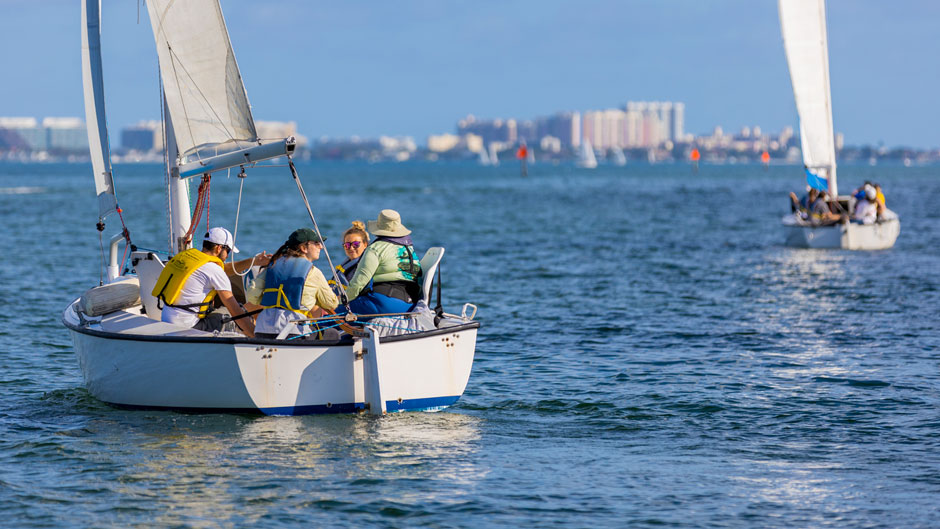Last Friday was the first time Sam Schipfer had ever been on a sailboat and the only way she could communicate with her deaf skipper was by speaking clearly, simply, and straight-to-the-point when eye contact was made.
“I was nervous,” said Schipfer, a first year Doctor of Physical Therapy student at the University of Miami, as she looked out over Biscayne Bay in Coconut Grove. She was there for the third class of the Integrated Sports and Leisure course, which is designed to promote the integration of able-bodied graduate students with physically challenged or disabled people as they work together to learn common recreational activities.
“My favorite mentor and his wife graduated from this program and highly recommended this course,” said Schipfer. “When I was accepted into the program, it was a no-brainer that I take this course. Overall, it was a really cool experience.”
The 35 students traveled from their traditional class setting to meet nearly 3 1/2 miles north of the Coral Gables campus at Shake-A-Leg Miami, a sailing and watersports nonprofit organization that serves the physically challenged and their friends and families. In groups of four or more, through a cooperative effort, students learned how to carefully transfer boat skippers with disabilities—from being deaf to having a spinal cord injury—on and off a fleet of 10 Freedom Independence 20-foot sailboats. All the boats are specially engineered for their commanders.
 Raveenn Mowbray, a first-year physical therapy student, said she took the course to gain hands-on experience with people with disabilities and to learn from them rather than the other way around.
Raveenn Mowbray, a first-year physical therapy student, said she took the course to gain hands-on experience with people with disabilities and to learn from them rather than the other way around.
“I understand how important it is for people with spinal cord injuries to be secured and lifted properly into their seats,” said Mowbray. “One wrong move could cost that person months to a year of recovery.”
 The program is led by Professor Robert Gailey, alongside Harry Horgan, the founder of Shake-A-Leg who created the organization 30 years ago after a car accident left him paralyzed at the age of 22. Their passion for sailing birthed a unique relationship between the two 28 years ago.
The program is led by Professor Robert Gailey, alongside Harry Horgan, the founder of Shake-A-Leg who created the organization 30 years ago after a car accident left him paralyzed at the age of 22. Their passion for sailing birthed a unique relationship between the two 28 years ago.
“Our students learn very early how to interact with people with disabilities,” said Gailey. “The one thing students will learn taking this course is how to listen to patients.”
 Allen Fiske is a skipper who retired as a full-time Shake-A-Leg employee 13 years ago but returns every year just for the course.
Allen Fiske is a skipper who retired as a full-time Shake-A-Leg employee 13 years ago but returns every year just for the course.
“For the students to be able to have this course here and learn from us is like no other,” said Fiske, who has a spinal cord injury. “It’s such tremendous positive energy. It’s infectious and the students really appreciate the situation that they’re in. They’ve got the world by the tail.”
Student Ashley Mennes said she’s proud to be part of the distinctive class.
“It’s kind of like a role reversal,” said Mennes. “It’s good for us as physical therapy students to be able to learn how to communicate and learn directly from the patients.”

